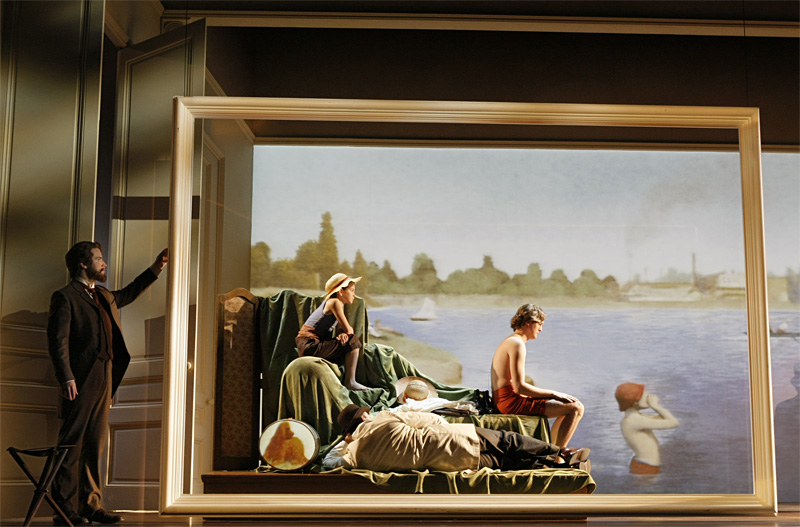This year’s “Success is the best revenge” award goes to David Stock for his Cello Concerto, written in 2001 and slated for a 2004 premiere in Pittsburgh, then canceled and never rescheduled due to soloist Truls Mork’s illness. But waiting rewarded him with cellist Joshua Roman, who at last brought the work to life with the Seattle Symphony in May. Uncompromising in its intensity but generous with arresting ideas, the richly brooding work is shot through with interestingly complementary flavors: 1950s film-noir scores in the first movement, Jewish liturgical melodies in the third. Most memorable is the electrifying solo cadenza right before this finale, with Roman—who can not only play anything but sell anything—scampering up and down his instrument. In recent years, the SSO has released a steady stream of CDs on the Naxos label; let’s hope this concerto is in the pipeline. GAVIN BORCHERT
Tap is a dance form you hear as well as see, and Savion Glover’s Bare Soundz show at the Moore was a real earful. He began wowing critics on Broadway at age 12; 24 years later, his latest experiment, dancing without any music at all, is certainly his most exposed work. During his January performance, undistracted by the presence of musicians, you could really study the multiple strands of his long foot phrases, watch the shifting downbeats develop and transform. Glover has a powerful, almost heavy style—he pounds the floor rather than floating above it like Bill Robinson or skimming along it like Gregory Hines (an early mentor). On that Saturday night, he didn’t just lay the beat down, he dug it out of the floor. SANDRA KURTZ
Handel’s Harp, my favorite local classical recording of the year (on ATMA Classique), includes all the examples of that composer’s use of that instrument: opera arias and interludes, a couple concertos, a couple arrangements. The final track, “Hark, hark, he strikes the golden lyre” from the oratorio Alexander Balus, is a mini-banquet of sonic color featuring the Seattle Baroque Orchestra and the cream of local early-music players, with tasty solos all around. Harpist Maxine Eilander and Stephen Stubbs on mandolin provide sparkle; soprano Cyndia Sieden, a Washington resident, combines poignant expressiveness and an improvisatory-sounding freedom while exploring, in one passage, the creamy-caramel bottom of her range. She’s already known for her fearless skill with the highest-flying parts in the soprano repertory (hear her Ariel in Thomas Ades’ opera The Tempest, also released on CD this year; her vocal lines here make Mozart’s Queen of the Night arias sound like “Happy Birthday”). On this track, Sieden’s descent into the depths in Handel’s aria was not only gorgeous but shocking. GB
At the Open Flight studio, composer Christopher Hydinger had the charming idea of scheduling Ayudapii in the waning natural light of a late August sunset. Paige Barnes created a group of solos where her dancers never stood up and never laid down. Her program was all about the off-center dynamic between the vertical and the horizontal. Sitting close in the audience, we could see each shift of weight or shape cascade through several different moments. Then the sun went down, and we were done. SK
Sunday in the Park With George, the James Lapine/Stephen Sondheim musical about painter Georges Seurat and the birth of his pointillist magnum opus, imagines the people depicted in Sunday Afternoon on the Island of La Grande Jatte as characters with backstories. The painting comes to life as the cast converges on the island at the end of Act 1. Seurat deftly arranges them—tilting a head here, removing a hat there—into a reproduction of the work projected on the back wall (thanks to some very nifty computer technology provided in the 5th Avenue Theatre’s April production). It’s a work of art about making a work of art—not merely the drama behind art, à la Amadeus or Shakespeare in Love, but a depiction of actual creation itself—and immensely moving. Sondheim’s score helps; this finale’s main musical motive is a striving, glowing upward sixth: a metaphor for the artistic life in two notes. Nothing I heard or saw elsewhere provided the theatrical thrill of these three minutes. GB
To the casual dance fan, choreographer Jerome Robbins is best known for his work with musicals like West Side Story and Fiddler on the Roof, but 1969’s Dances at a Gathering might be his most important work. Pacific Northwest Ballet added this modern classic to its repertory last May in a series of transcendent performances. If you were unlucky enough to miss Dances, set to a Chopin piano score, perhaps PNB will give us a birthday encore in 2010, the 200th anniversary of the composer’s birth. SK




